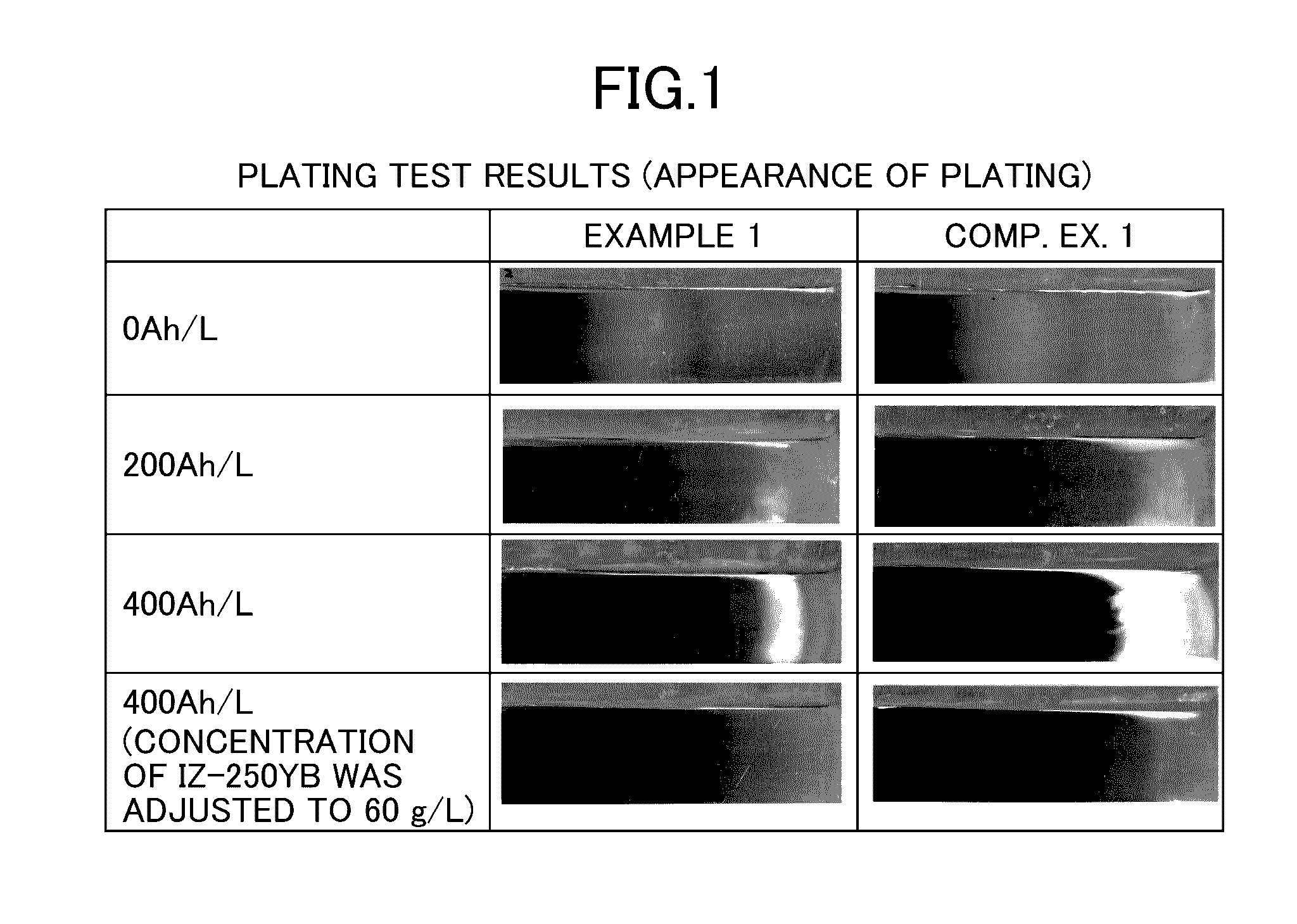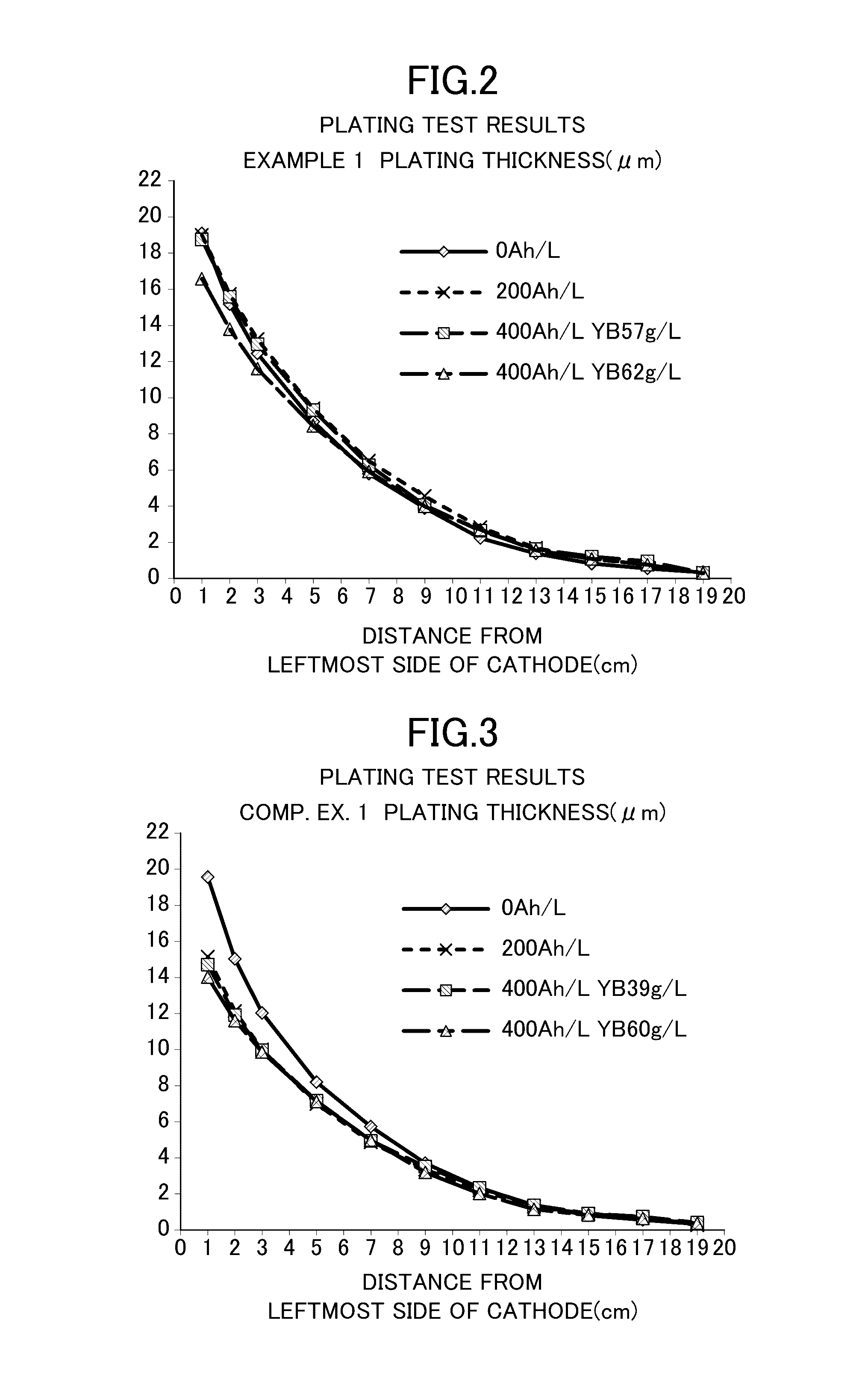Zinc alloy plating method
a zinc alloy and plating technology, applied in the field of zinc alloy plating method, can solve the problems of reducing current efficiency, oxidative decomposition of amine-based chelating agent, deterioration of plating performance, etc., and achieves the effect of easy anode separation, prolonging the life and maintaining the performance of the zinc alloy plating bath
- Summary
- Abstract
- Description
- Claims
- Application Information
AI Technical Summary
Benefits of technology
Problems solved by technology
Method used
Image
Examples
example 1
[0033]Zinc-nickel alloy plating was obtained as follows: Specifically, a cathode and an anode were separated from each other by an anion exchange membrane SELEMION (manufactured by Asahi Glass Co., Ltd., hydrocarbon-based quaternary ammonium base-type anion exchange membrane). An alkaline zinc-nickel alloy plating liquid shown below was used as a catholyte for a cathode chamber (500 mL), and a 130 g / L (3.3 mol / L) aqueous caustic soda solution was used as an anolyte for an anode chamber (50 mL). A current was applied at 400 Ah / L. The cathode current density was 4 A / dm2, the anode current density was 16 A / dm2, and the plating bath temperature was 25° C. The plating liquid was kept at 25° C. by cooling. An iron plate was used as the cathode, and a nickel plate was used as the anode. Note that the iron plate serving as the cathode was exchanged every 16 Ah / L during the current application. The zinc ion concentration in the catholyte was kept constant by immersing and dissolving zinc met...
PUM
| Property | Measurement | Unit |
|---|---|---|
| concentration | aaaaa | aaaaa |
| concentration | aaaaa | aaaaa |
| concentration | aaaaa | aaaaa |
Abstract
Description
Claims
Application Information
 Login to View More
Login to View More - R&D
- Intellectual Property
- Life Sciences
- Materials
- Tech Scout
- Unparalleled Data Quality
- Higher Quality Content
- 60% Fewer Hallucinations
Browse by: Latest US Patents, China's latest patents, Technical Efficacy Thesaurus, Application Domain, Technology Topic, Popular Technical Reports.
© 2025 PatSnap. All rights reserved.Legal|Privacy policy|Modern Slavery Act Transparency Statement|Sitemap|About US| Contact US: help@patsnap.com



